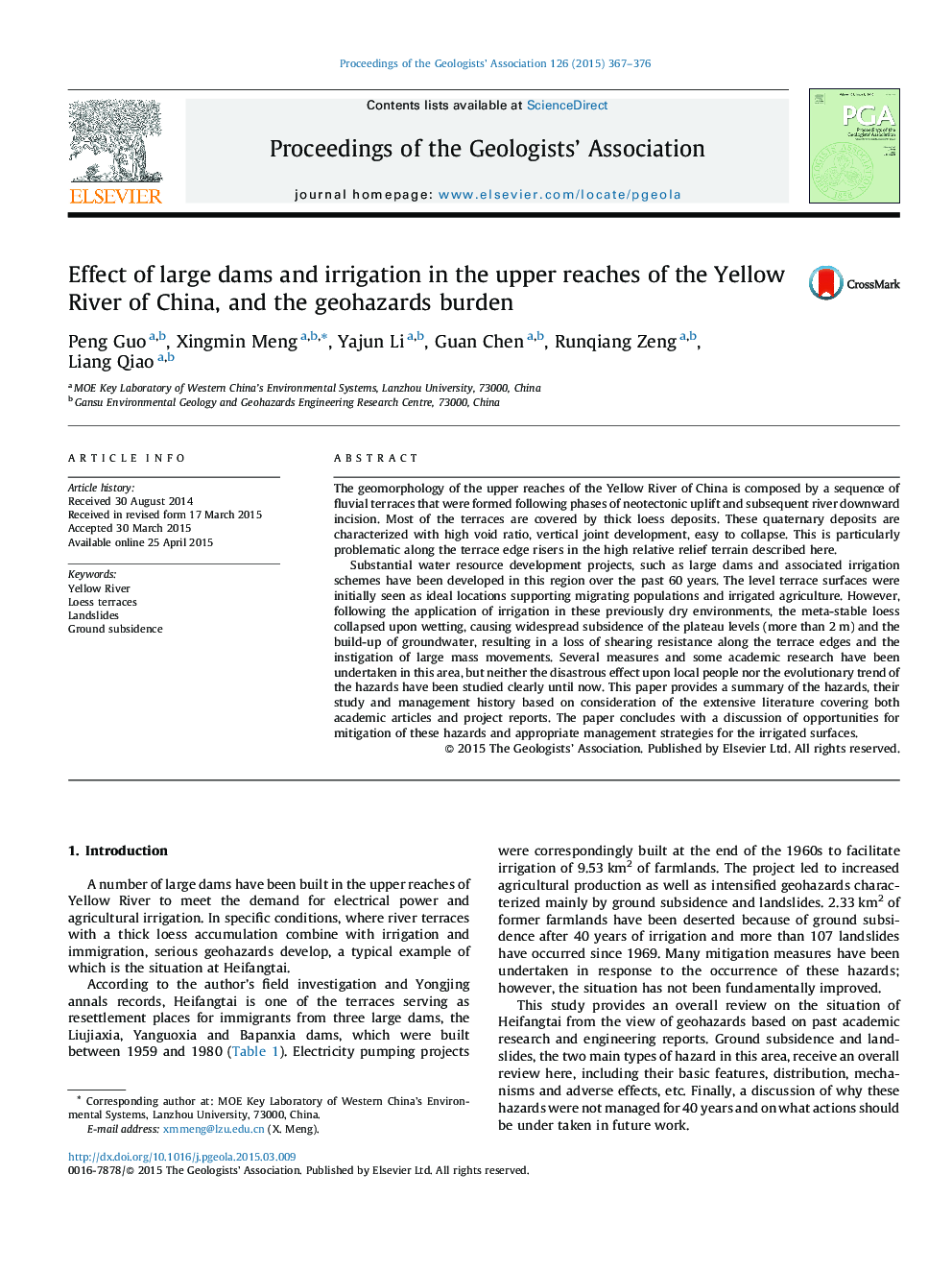| Article ID | Journal | Published Year | Pages | File Type |
|---|---|---|---|---|
| 4734660 | Proceedings of the Geologists' Association | 2015 | 10 Pages |
The geomorphology of the upper reaches of the Yellow River of China is composed by a sequence of fluvial terraces that were formed following phases of neotectonic uplift and subsequent river downward incision. Most of the terraces are covered by thick loess deposits. These quaternary deposits are characterized with high void ratio, vertical joint development, easy to collapse. This is particularly problematic along the terrace edge risers in the high relative relief terrain described here.Substantial water resource development projects, such as large dams and associated irrigation schemes have been developed in this region over the past 60 years. The level terrace surfaces were initially seen as ideal locations supporting migrating populations and irrigated agriculture. However, following the application of irrigation in these previously dry environments, the meta-stable loess collapsed upon wetting, causing widespread subsidence of the plateau levels (more than 2 m) and the build-up of groundwater, resulting in a loss of shearing resistance along the terrace edges and the instigation of large mass movements. Several measures and some academic research have been undertaken in this area, but neither the disastrous effect upon local people nor the evolutionary trend of the hazards have been studied clearly until now. This paper provides a summary of the hazards, their study and management history based on consideration of the extensive literature covering both academic articles and project reports. The paper concludes with a discussion of opportunities for mitigation of these hazards and appropriate management strategies for the irrigated surfaces.
